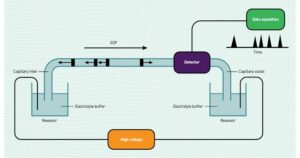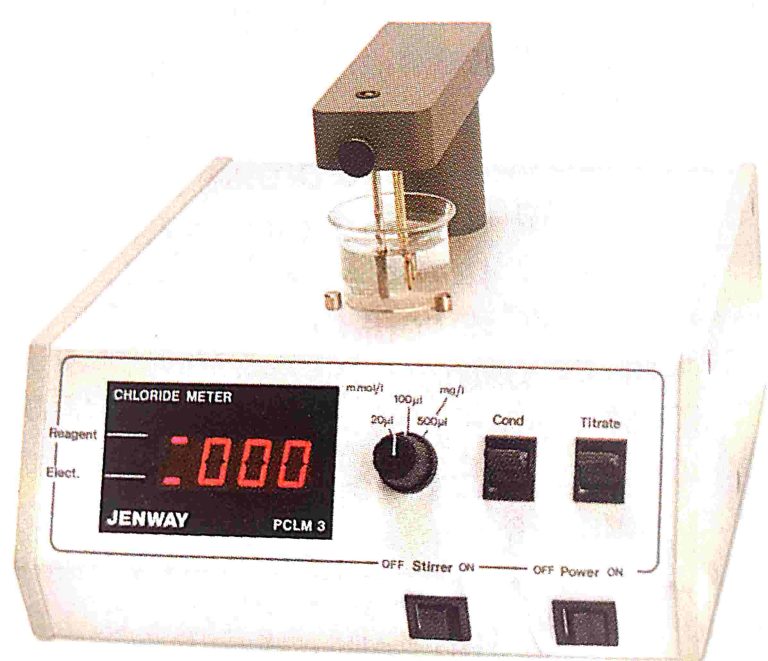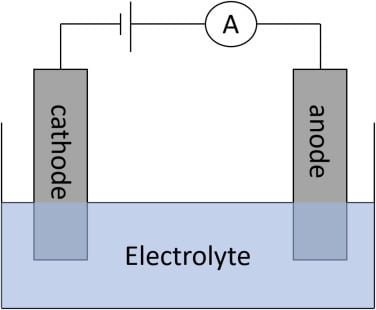Capillary Electrophoresis: –
Introduction
Principle
Component
procedure
Advantages
Introduction: –
Capillary electrophoresis is a technique used in analytical chemistry to separate ions based on their electrophoretic mobility in a buffer-filled capillary under the influence of an electric field. It’s widely used in various fields such as pharmaceuticals, biotechnology, environmental analysis, and forensic science due to its high resolution, speed, and efficiency.
Principle:–
Capillary electrophoresis (CE) separates analytes based on their charge-to-size ratio. When an electric field is applied across a capillary filled with a buffer solution, charged analytes migrate toward the electrode with an opposite charge. Smaller, highly charged molecules move faster than larger, less charged molecules, leading to separation.
Components:
Capillary:– Usually made of fused silica with a small diameter (typically 25-100 µm). It acts as the separation column.
Buffer:- A conductive solution that provides the medium for analyte migration and helps maintain a constant pH.
- Power Supply:- Provides the electric field necessary for analyte separation.
- Detection System:- Typically UV-Vis absorbance, fluorescence, or conductivity detectors are used to monitor analyte migration.
- Sample Introduction System:- Allows for the introduction of samples into the capillary.
- Modes of CE:
- Capillary Zone Electrophoresis (CZE):- Separation based on differences in charge-to-size ratio.
- Capillary Isoelectric Focusing (CIEF):- Separation based on differences in isoelectric points of analytes..
- Capillary Gel Electrophoresis (CGE):- Separation similar to gel electrophoresis but within a capillary, using a sieving polymer matrix.
Advantages:-
- High separation efficiency and resolution.
- Small sample and buffer volumes required.
- Rapid analysis times.
- Compatibility with a wide range of analytes, including proteins, nucleic acids, and small molecules.
- Automation and integration with other analytical techniques.
- Applications:
- Analysis of biomolecules such as proteins, nucleic acids, peptides, and carbohydrates.
- Quality control in pharmaceutical and biotechnological industries.
- Environmental analysis for pollutants and contaminants.
- Forensic analysis for DNA profiling and drug testing.
- Clinical diagnostics for disease biomarkers and drug monitoring.
- Challenges:
- Sensitivity to variations in temperature and voltage.
- Potential for sample adsorption to the capillary wall.
- Difficulty in detecting neutral or poorly charged molecules.
- Recent Developments:
- Microchip electrophoresis:- Miniaturization of CE systems for point-of-care and on-site analysis.
- Capillary electrophoresis-mass spectrometry (CE-MS) coupling:- Enhanced detection and identification capabilities.
- On-column detection techniques: Improved sensitivity and selectivity.
- Overall, capillary electrophoresis is a powerful analytical technique with widespread applications in various scientific and industrial fields, offering high-resolution separation and rapid analysis capabilities






